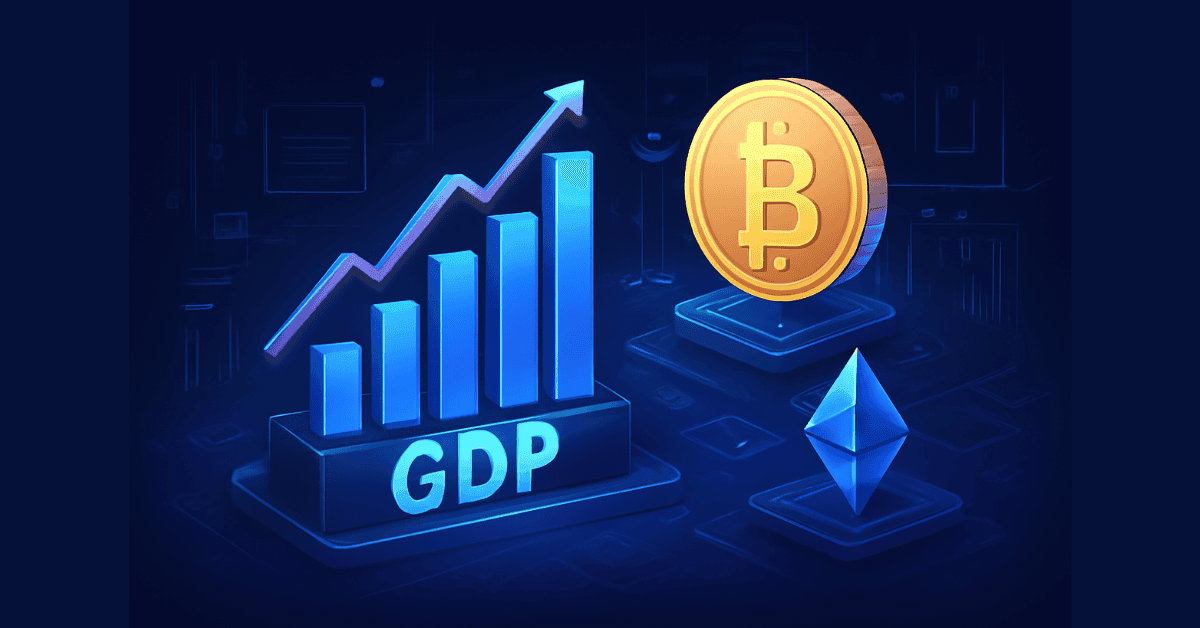
Is GDP Still Relevant in the Crypto World?
In the traditional economy, GDP (Gross Domestic Product) is considered a key indicator reflecting a country’s performance. However, as blockchain, digital assets, and DeFi are redefining how the global financial system operates, many experts have begun to question:
Is traditional GDP still relevant for measuring the health of a digitized, decentralized economy?
1. From GDP to the “Crypto-Native Economy” Concept
GDP measures the total value of goods and services produced within a country over a specific period. In the crypto world, this is reflected by metrics such as:
-
- Total transaction volume on the blockchain.
-
- TVL (Total Value Locked) in DeFi protocols.
-
- NFT trading volume and tokenized asset flows.
-
- The number of active wallets over time.
These indicators capture an economy without borders, decentralized and non-traditional — something traditional GDP cannot accurately measure.
2. Does Crypto Have Its Own “GDP”?
The answer is: Yes — but not in the conventional sense.
Instead of measuring national production, the crypto economy relies on indicators like:
-
- On-chain volume: Total value of transactions on blockchains like Ethereum, Solana, or Bitcoin.
-
- Stablecoin circulation: The amount of stablecoins issued and used in the market.
-
- DeFi metrics: Including TVL, transaction fees, and liquidity levels.
-
- Market capitalization: Total market cap of crypto assets, indicating scale and investor confidence.
These metrics represent a global digital economy that isn’t bound by national borders or fiat systems.
3. Traditional GDP vs. Crypto Economy Indicators
| Criteria | Traditional GDP | Crypto/Blockchain Economy |
|---|---|---|
| Geographic Scope | Nation-based | Borderless |
| Measurement Tools | Goods & services | Tokens, transactions, NFTs, smart contracts |
| Currency Unit | Fiat (USD, EUR, VND...) | Crypto (ETH, BTC, stablecoins...) |
| Governance | Governments, central banks | Blockchain, smart contracts, DAOs |
4. Why Crypto Investors Should Understand “Digital GDP”
While traditional GDP is still useful for understanding macroeconomics, crypto investors should be aware of decentralized economic signals, such as:
-
- When TVL rises → capital is flowing into DeFi → bullish market sentiment.
-
- When stablecoin supply drops → liquidity is being withdrawn → possible caution in the market.
-
- When NFT trading volume spikes → indicates rising digital consumption and user engagement.
Understanding how “crypto GDP” behaves enables better forecasting of capital flows, growth cycles, and helps optimize investment strategies in real time.
5. Conclusion
As the world transitions into Web3, the way we measure economic activity must evolve too.
Traditional GDP remains important for the physical economy, but to truly understand the blockchain and crypto ecosystem, one must focus on on-chain, real-time metrics. These are vital in redefining how we measure and shape the future of the global economy in the digital age.